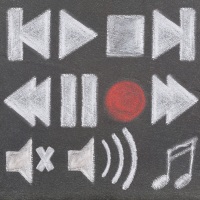About
I am an Argentine/Brazilian who lives in Canada and has been a professional translator of English, Portuguese and Spanish since 1996. I feel that I am a translator in the broadest sense of the word: I have localized software, translated manuals, scientific papers, websites, fiction and non-fiction; I’ve dealt with marketing, administration, art, engineering, literature, even ballet. In most of these cases, I’m not talking only about texts, but multimedia formats as well — videos for cinema theaters, cable TV, websites or YouTube, intended to entertain, sell, teach, inform.
In stricter terms, I translate written texts and I also specialize in subtitling. However, lately I’ve felt that it’s getting harder to separate static texts from dynamic, audiovisual materials. I can’t help but use my experience with subtitling when I translate PowerPoint presentations (for instance, to decide how to break the lines inside text boxes so they look better and read more fluently); I can’t help but read aloud when I translate a novel and edit the text taking its rhythm and sound into consideration. This made me realized that the audio & visual component of my work is not a distinct field of work, a subgroup of my work as a translator; rather it permeates all of the other work that I do.
As much as I feel that I am an accomplished multimedia translator, happy with what I do and what I teach my subtitling students, with great clients who appreciate and respect my work, I am also tired of seeing the same stereotypes about audiovisual translation repeated over and over in professional circles and the media. We do not translate only what you see on cinema screens as much as translators don’t translate only novels; we are not always underpaid, as well as not all translators are paid peanuts; we will not be replaced by fansubbers or by YouTube’s automatically translated subtitles any more than professional translators will be replaced by Google Translate; we are not kids having fun while watching our favorite cartoons any more than independent translators are lazy bums who work from their beds using automatic translation; excellent work is not the result of pure love and inspiration. And while conferences devoted to audiovisual translation present meaningful insights and technical advances in our profession, events about translation and interpretation in general seldom welcome presentations about multimedia translation that go beyond the very basic, and often reinforce those stereotypes that don’t bring any benefits to professional translators.
This is why I started this blog. I believe that all translators and interpreters, regardless of their niche or expertise, would benefit from understanding that multimedia is a part of their lives too (because it’s becoming a part of everybody’s lives). I believe that bringing awareness and valuing professional multimedia translation would benefit all translators and interpreters, as much as valuing translation in general is essential for those who specialize in multimedia translation. I believe that the multimedia age is here to stay, and it’s critically important for our profession to educate the general public about what we do as multimedia translators, which is not really that different from what we do as translators and interpreters, since multimedia is all around us.
. A side note: I am not an interpreter, and regarding multimedia I specialize in subtitling, but I have limited contact with dubbing. So I would appreciate any comment, insight, or recommended reading to include those activities into my discussions. You can also write me if you would like to publish a guest post here (at my discretion).
